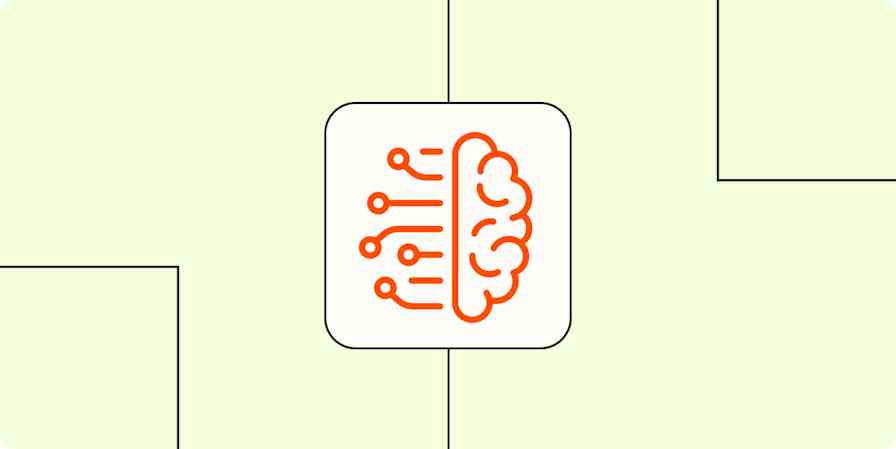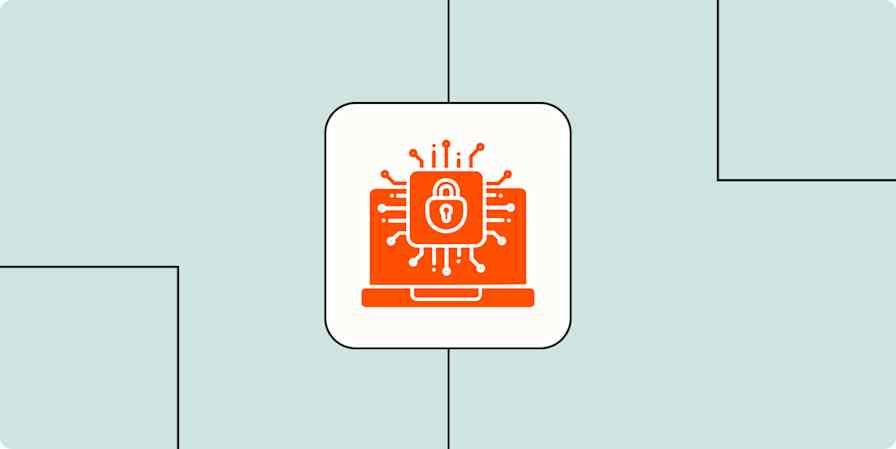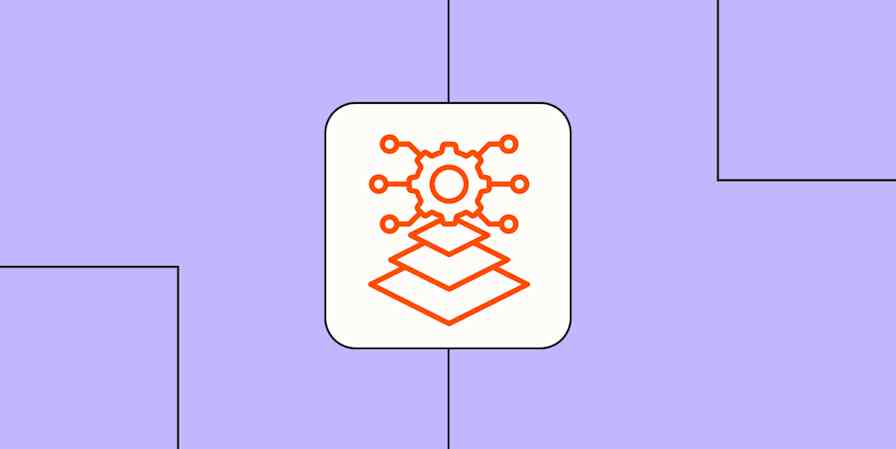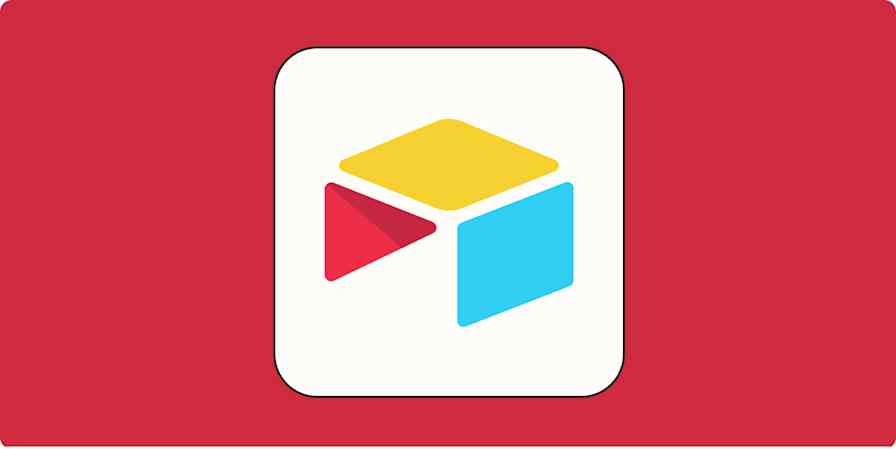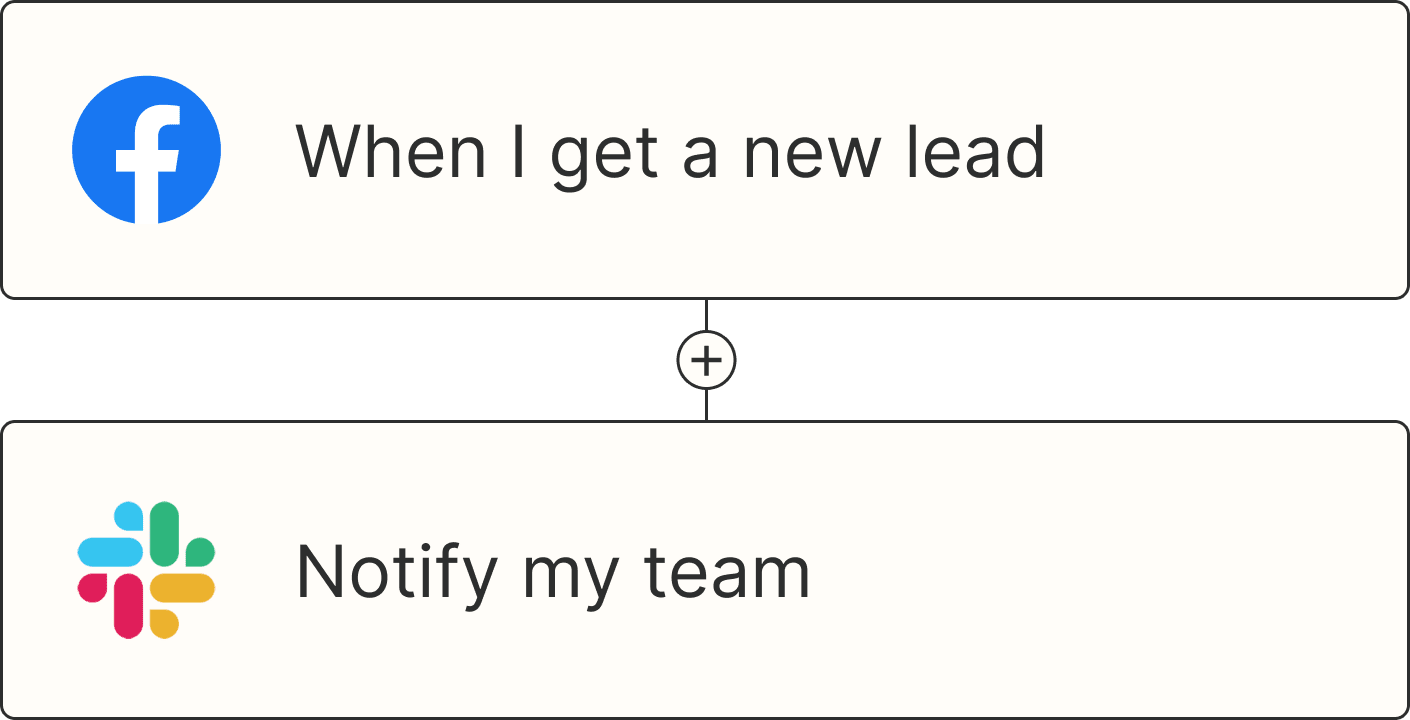We independently review every app we recommend in our best apps lists. When you click some of the links on this page, we may earn a commission. Learn more.
When was the last time you looked at your project management app and didn't get a stress level spike? No matter how much you plan or reprioritize, it always feels like running a sprint on a tightrope. But now that AI is in the game, we can pass that stress over to the robots.
With AI being added to almost every app in existence, we've seen a surge in AI project management tools. There's still no replacing the human project manager, but AI project management apps can help things move more smoothly, so more time can be spent working on the projects instead of managing them.
I spent a month looking through all the project management software options that have added AI to the mix. Then I narrowed it down, testing only the ones where AI was really changing how things worked. Based on that research and testing, these are the six best.
The best AI project management tools
Asana for AI-powered productivity recommendations
ClickUp for asking questions about your projects
Wrike for predicting project risks
Motion for a calendar-native approach
Hive for planning a project from a prompt
Zapier for AI orchestration and automation
What makes the best AI project management software?
How we evaluate and test apps
Our best apps roundups are written by humans who've spent much of their careers using, testing, and writing about software. Unless explicitly stated, we spend dozens of hours researching and testing apps, using each app as it's intended to be used and evaluating it against the criteria we set for the category. We're never paid for placement in our articles from any app or for links to any site—we value the trust readers put in us to offer authentic evaluations of the categories and apps we review. For more details on our process, read the full rundown of how we select apps to feature on the Zapier blog.
Every project and task management app promises to reduce the friction between what you have to do and actually doing it, helping you and your team prioritize and manage your time. With AI, the promises are bolder—but not all apps follow through on it. Like in other app categories, the easiest way to implement AI is adding generative text features. Useful? For sure. But generating project summaries isn't as useful as risk predictions, workflow optimization, or smart recommendations.
So for this list, I got strict and rated these apps based on the following criteria:
AI features. All the apps on this list use AI for solving core problems around project management, not just slapping an AI text generator on top of the platform.
Built for teams. While there are plenty of AI task managers out there for individuals, that's not what this list is about. There are no personal productivity use cases here, only apps that'll help your team save time.
Project management focus. Even if the apps lean on the all-in-one side, each of my picks has a specialized set of project management features.
Automation and integrations. AI is a great addition to automation, but having the classic automation tools available is still very important.
Platform reputation. I steered clear of apps with poor reviews or a bad track record. As new AI apps pop up, it's important to be sure you're not jumping on board a sinking ship.
I spent a month signing up for everything I could find, activating the AI features, creating projects, and pretending I was moving forward on them. I observed what changed as I did so, taking notes on how AI improved the experience on each app.
The strict project management focus here means that apps like Notion and Airtable didn't make the cut. While these apps have robust AI features, their implementation is more general, tackling a wider set of problems. I invite you to try them if you're interested, but if you want to solve your project management pain points, let's dive right in.
The best AI project management tools at a glance
Best for | Pricing | |
|---|---|---|
AI-powered productivity recommendations | AI included in paid plans starting at $13.49/user/month | |
Asking questions about projects | AI features part of ClickUp Brain starting at $14/user/month | |
Predicting project risks | AI included in paid plans, starting at $10/user/month | |
A calendar-native approach | AI Workplace at $29/month (annual billing) for 1 user, with 1,000 AI credits included | |
Planning a project from a prompt | Some AI features in free plan; full AI access from $7/user/month | |
AI orchestration and automation | Some AI features included in free plan; paid plans from $19.99/month |
Best AI project management tool for productivity recommendations
Asana (Web, macOS, Windows, iOS, Android)

Asana pros:
Plenty of AI-powered features
Lots of useful project views
Asana cons:
Takes some time to get used to
Asana already has a strong position in the project management scene. It offers a lot of depth both to manage the workload buffet and help you finish what's on your plate, with good visibility on where things stand along the way. While it has great front-and-center AI features, it takes the trophy for all the behind-the-scenes magic that helps you stay on track. Let me give you a quick tour.
Asana Machine Learning gathers metadata generated as you work: data on relationships between you and other workspace users, your interactions with projects and portfolios, and task-related data. As Asana ML processes this metadata, it adds relevance sorting to your inbox, suggests the next task you should jump on, and provides shortcuts for teams and workspace items you interact with.
Beyond this background work, Asana's "Powered by AI partners" features add an extra layer of productivity. They can help with the now-classic text generation, but they also include other, more interesting possibilities: Smart status detects open questions and roadblocks, while Smart goals uses workspace data to set achievable objectives. And Asana keeps building on top of this feature iceberg, as there are more smart features consistently jumping out of contextual menus and side tabs.
This year, Asana is joining the AI teammate trend: currently in beta, you can create AI agents with custom instructions, connect them to your data, and have them execute tasks while updating your workspace. The building process is accessible to non-technical people via the AI Studio, with templates available if you're unsure how to start. This adds AI-driven automation, another opportunity to free up your precious time for more critical tasks.
If you like what you're reading so far, hop in and give it a try. And if you're in the mood for new, productive experiences, connect Asana with Zapier to further increase its powers, automating Asana across thousands of other apps and creating fully automated, AI-powered systems for your work. Learn more about how to automate Asana, or get started with one of these pre-made templates.
Create new Asana tasks from new Google Calendar events
Add new Google Calendar appointments to an Asana task list
Asana price: AI included in paid plans starting at $13.49/user/month
Best AI project manager for asking questions about your projects
ClickUp (Web, macOS, Windows, iOS, Android)

ClickUp pros:
Great price considering feature set
Robust collaboration tools
ClickUp cons:
Minor bugs from time to time
ClickUp is an all-in-one app, offering dashboards, chat channels, and project management. It offers both the ClickUp Brain for an AI chat-driven experience to control your workspace, and AI agents that can double as machine teammates that get stuff done for you.
When you're looking at your dashboard, check out the top-right side of the screen. Click the Ask button, and the side tab will pop into view. From here, you can use one of the conversation starters. For example, you can ask about who created which tasks, URLs saved inside them, and information about status. Further down, you'll see more powerful tools:
Space summary opens a list of data you want to include in a report, including tasks by type, assignee, or task themes. Once you hit Generate, it summarizes and presents the data you chose to include.
Project update presents a similar list, but with filters to help you select which time range you'd like to see. The result is a new report that shows what changed, a good way to track progress in periods of time.
Find duplicate tasks combs your lists for tasks that are essentially the same, so you can clean up your spaces.
Find tasks that are stuck shows all the tasks that have been hanging around your space uncompleted, so you can start troubleshooting.
But beyond these core features, ClickUp has a subscription tier called Brain Max that expands the chat's capabilities. When activated, you can integrate other apps you use for work, such as Dropbox or Microsoft SharePoint (among many more), and get responses based on the content across your tech stack. Once retrieved, you can use it to update your workspace with up-to-date information on projects, saving you tabbing around and copy/pasting yet one more time.
As for its AI agents, look to the top right again and find the smiley face with a magic star. This opens Autopilot Agents, where you can set up templated actions to generate daily or weekly reports and automatically generate task properties. Need something more personalized? You can also create your own agents, setting the behavior, connected data, and which actions it can take.
If you don't find the integration you're looking for, you can use Zapier's ClickUp integrations to connect it to thousands of other apps and do things like automatically create tasks based on emails or Slack threads. Learn more about how to automate ClickUp, or get started with one of these pre-made templates.
Add starred Gmail emails as tasks in ClickUp [Business Gmail Accounts Only]
ClickUp price: AI features available via ClickUp Brain pricing, currently at $14/user/month.
Best AI project management software for predicting risks
Wrike (Web, macOS, Windows, iOS, Android)

Wrike pros:
Customizable interfaces
Strong native automation features via Wrike Integrate
Wrike cons:
Segmented pricing (many useful features locked in pricey plans and add-ons)
When you're able to see an oops moment before it happens, you can steer the ship away from it. Wrike uses AI to predict project risks, so you spend more time celebrating and less time wondering what went wrong.
There are two elements to the risk prediction features. The first one is deeply embedded into the platform: Wrike uses machine learning to analyze your workspace, assess project complexity, and understand how many tasks stand in the way of the finish line. It takes a look at assignees, workload, and overdue tasks per user, both present and past trends. It processes task activity to understand if anyone's aware that it needs to be done or if it's going to be forgotten until the last minute.
All this data reveals patterns around how you and your team work. With it, Wrike can predict and explain both if and how things will go wrong, notifying team leaders so they can switch up tactics. There's a color-coded system to tell you how serious things look: Green means Dave is happy by the watercooler during morning break; red means he's hammering away on his computer, with 12 overdue and 10 unassigned tasks staring him down.
The other entry point to risk prediction is via the newly implemented Wrike Copilot. It works just like any other embedded chatbot, with full access to everything in your workspace. Using prompts, you can ask about risk—or any other aspects of your projects—and get a detailed explanation of what's about to crumble, what's probably going to be ready on time, and what's definitely under control.
The AI feature set is broad, brimming with useful tools. I don't have enough space here to freely geek out, so here's a tightened list. Beyond the table stakes of generating and summarizing content, AI agents can automate simple tasks based on instructions, just by providing a prompt, a trigger, and an action. If you like using ChatGPT, Claude, or Gemini, you can also connect them to Wrike via the MCP server, so you can access project management data while chatting in these external apps.
And you can do even more with Wrike by connecting it to Zapier, so you can automate workflows across thousands of apps and build fully orchestrated AI systems. Learn more about how to automate Wrike, or get started with one of these pre-made workflows.
Wrike price: AI is only available on paid plans, which start at $10/user/month
Best AI project management app for a calendar-native approach
Motion (Web, Windows, Mac, iOS, Android)

Motion pros:
Calendar, tasks, project management, and meeting scheduling all-in-one
Email-to-task capture available
Motion cons:
Pricey
Some teams swear by Kanban for that little dopamine kick when you move a task to done. Others like the Gantt view to map productivity to available time. But the real front-line is in the calendar: when will you actually work on each task? Motion is a great option to optimize your day as you go, no matter if there's a surprise meeting or a priority switch.
It builds on the core calendar experience with a project management feature set that turns your day into a living schedule. When you (or your manager) add tasks to a project, these get mapped onto the assignee's calendar. If a higher priority task comes along, such as a team meeting, Motion slots that in the appropriate time and reshuffles your near future based on how critical each task is.
Since your calendar can shift based on these changes, does Motion turn into a digital micromanager? Yes and no: It does rearrange tasks if there are big changes, but it keeps calendar integrity if priorities remain stable. More than that, you can set dedicated focus time as a high-priority event, so those hours won't be touched when you need to dive really deep into your work. To further protect your time, you can set meeting limits and buffers so you spend more time where you do work and less time on Zoom.
While everyone on your team is keeping an eye on the calendar, Motion's AI is keeping an eye on task data. Based on team capacity and active work, it can predict when a project will end and alert you if it starts veering off-track. You can have a real-time view of progress as it happens, so you don't have to constantly check in with people. To simplify project planning, you can generate plans with the AI Projects feature to get tasks, assignments, and due dates ready so you can start moving as soon as possible.
The feature set keeps growing with AI teammates that automate tasks, extract insights from meetings, and turn them into action items, all around the calendar as the central experience. A note: if you like the flexibility to set up in-depth board and Gantt views, Motion isn't as mature as other options on the list, so be sure to give it a try and see if it's missing anything critical.
You can do even more with Motion when you connect it to Zapier, so you can build AI-powered automations for all your project management workflows. Automatically update and create tasks in Motion whenever actions are taken in the other apps you use most. Learn more about how to automate Motion, or get started with one of these pre-made templates.
Create tasks in Motion from new flagged emails in Microsoft Outlook
Motion price: AI Workplace at $29/month (annual billing) for 1 user, with 1,000 AI credits included
Best AI project management software for planning a project from a prompt
Hive (Web, macOS, Windows, iOS, Android)

Hive pros:
Feature set expandable with add-ons
Customizable dashboards
Hive cons:
Mobile apps could be better
Sometimes it's a new project type, and you don't know where to start. Other times you know exactly how it goes—but do you want to drop the tasks into the app yourself? No matter if this is your first or thousandth rodeo, Hive can get you there with its project-from-a-prompt tool.
You'd expect this feature would be easily accessible from the main user interface, but the development team at Hive turned it into a mini-treasure hunt. On the top-right of the screen, click the blue question mark button, and go to the template library. A pop-up appears, and there it is: click the Let Buzz plan your project button. You'll leave the main interface and arrive at the project generation screen that you see in the screenshot above.
It really is super easy and intuitive to use: add a project title, and send it to Buzz. A stream of tasks will appear on the right side of the screen, split by phase and including start and end dates. You can keep trading messages with the AI to make tweaks. When you're ready, click the Create Project button, and you'll be taken back into the main app—along with your freshly created tasks, of course.
Beyond this prompt-to-project tool, there's a collection of AI assists named HiveMind. You can generate content, get more tasks for a project, and edit and translate text. You'll access these contextually throughout the app, adding prompts where needed and getting the results right there.
When you're done plotting all the work you have to do for the quarter, connect Hive to Zapier, and automate even more of your project management. Here are some ideas to get you started.
Create new Hive projects from new Jotform submissions
Notify your team in Hive of a Google Calendar event
Update rows in Google Sheets when actions are updated in Hive
Hive price: Some AI features included in the free plan; paid plans with all AI features from $7/user/month
Best AI project management software for AI orchestration and automation
Zapier (Web)

Zapier pros:
Automates repetitive tasks across thousands of apps
Build your own internal tools with Interfaces, Tables, and AI Agents
Built-in AI to generate workflows and orchestrate project logic
Zapier cons:
Not a traditional project management app
Zapier is a great choice for teams who want to automate how work moves across tools—not just what work gets done. It's ideal if you're cobbling together projects across a complex tech stack or if you're tired of manually copying data between tools like Asana, Google Sheets, Slack, and Airtable.
The real power of Zapier goes beyond simple task automation. With Zaps, you can connect 8,000+ apps to automate everything from task updates to notifications. But if you want to build more structured workflows, Zapier Interfaces lets you spin up lightweight internal tools—like custom project dashboards, client intake forms, or cross-functional status hubs—without writing code. Pair that with Zapier Tables to store and manage structured project data, and AI Agents to make decisions and handle tasks on your behalf, and you've got a full AI-powered orchestration layer for your team's projects.
Want to automatically assign tasks based on form responses, build your own ticket triage system, or create a system that updates stakeholders in Slack every time a project status changes in Airtable? Zapier can do all of that—and more—by letting you design a project management experience that fits your workflow, not the other way around.
Learn more about automating your project management, or get started with one of these pre-built templates.
Automate the way you receive project requests from clients with a customizable project intake form template.
Submit project updates in a form and let AI Agents create intelligent status update emails.
Zapier price: The free plan includes two-step Zaps, access to Interfaces, Tables, AI Agents, and 8,000+ integrations. Upgrade to the Pro plan for $19.99/month to unlock multi-step Zaps, filters, branching logic, and more.
Project automation with AI
I long for a day when I don't need to think to interact with my project management suite. When it manages my time and workload in perfect sync with the demands of the day and my energy level. While that may still be in the making, the best AI project management apps today can already do a lot to keep your eyes on the ball, not on the coach.
Related reading:
This article was originally published in November 2024. The most recent update was in November 2025.

